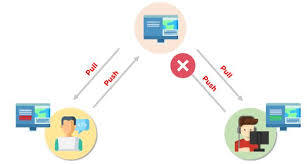In today’s world, businesses, organizations, and other entities that software and web developers consider “clients” heavily rely on being able to efficiently collect, access, and otherwise manage data for their day-to-day operations. For many, losing access to databases or similar outages hinders their ability to continue operations. In Data Redundancy: Meaning and Importance, author Charlotte White discusses data redundancy and some basic strategies and implementations to address these vulnerabilities.
Data Redundancy goes beyond simply having backups of existing data (although they’re an important component), it’s a proactive plan to prevent data loss and maintain smooth operations in the case of a server shutdown, hardware malfunction, or other major disruptive issue. It’s crucial for ensuring the continuity of business operations as website downtime often leads to financial losses especially for new websites or those with low traffic. Outages can also impact search engine rankings, as uptime is a factor commonly considered by search algorithms. Furthermore, failure to do so resulting in data loss can result in crashes/issues in other systems, loss of customer information, business details, and other critical and/or confidential information which is essential for an organization’s success and reputation.
How Redundancy Works: Effective redundancy designs reduce dependency on any single copy of data or data center. They commonly implement a 3-2-1 rule of backups, which means having three copies of data in two different locations, one of which is offline storage. Redundancy strategies should also consider factors like hardware redundancy; many servers use hard disk drives (HDDs) to store data which can fail due to simple wear and tear. Some hosting companies use RAID (Redundant Array of Independent Disks) and un-RAID solutions to mirror data from HDDs to other storage devices, minimizing the impact of HDD failures.
Recently in CS343, we’ve been looking at software architectures and strategies for organizing systems that could be realistically implemented to address clients’ needs. In particular, we’ve been considering the differences and strengths/weaknesses between a simpler architecture such as the Monolith versus a more complex architecture such as the MicroServices model, with several intercommunicating systems.
Most of the scenarios we discussed involved the ease of pushing out updates, but I was left wondering about the repercussions and ways to manage the possibility and reality of a database or system going totally offline. For businesses involved in eCommerce, uptime is money in terms of sales as well as maintaining search engine optimization. Given how damaging a disruption like this could be, data redundancy plans are an important consideration when planning and setting up a website or system. Understanding the value of D.R. and how they are implemented is an asset in planning and designing software systems and projects, and generally beneficial for computer science students and professionals.
Source:
1. Data Redundancy Meaning and Importance: A Complete Guide | ResellerClub India Blog
From the blog CS@Worcester – Tech. Worth Talking About by jelbirt and used with permission of the author. All other rights reserved by the author.



